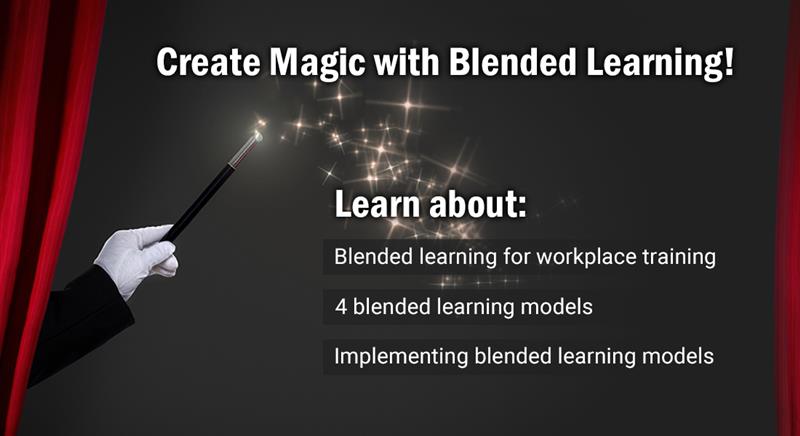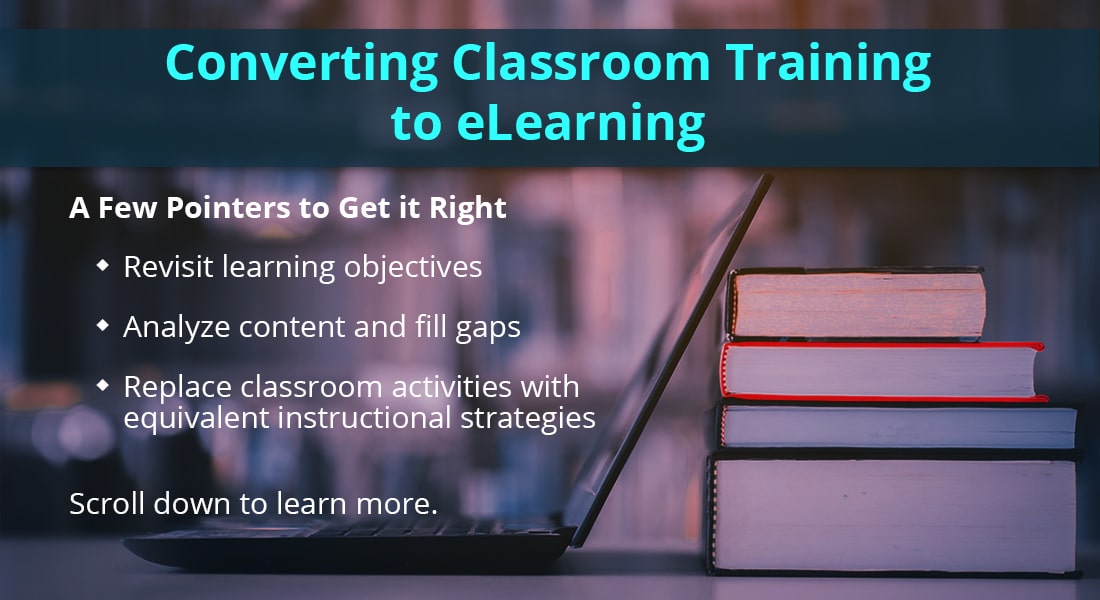Online Learning Solutions That Best Suit Your Sales Training Requirements

According to the 2014 Training Industry Report, 47.3% of Sales Training was delivered through Instructor-Led Training (ILT). Any organization that has trained sales reps in a classroom environment knows how challenging it can be.Instructor-led Training (ILT) requires a trainer to be present in the classroom all the time which means learners cannot learn on their own. Learners cannot take the course multiple times because classroom training is not usually repeated. Besides, it is relatively expensive. Each of these contributes equally to the overall problem.
While classroom training provides the important “human touch” to the training (face-to-face interaction), it cuts into the work time of the employees. And although the training takes place in a quiet, safe environment, it’s also removed from the equipment and materials employees use on the job. So, how do you overcome challenges as such to achieve optimum sales training results?
E-learning or Online learning is an effective way to overcome these challenges and support classroom training. As more and more training workshops continue aiming to ‘do more with less’, and because anew generation of workers prefers Just in Time (JIT) support, companies are increasingly adopting online learning to supplement classroom training. Let’s see how it can help you with your training requirements.
Scenario-based learning:
Scenario-based learning uses interactive scenarios to support active learning strategies such as problem-based or case-based learning. It involves learners by working them through a storyline/narrative usually revolving around a complex problem. In this type of learning, learners must apply their knowledge and problem-solving skills in a real-world environment. Let us look at an example.
One of the biggest manufacturers of precision weighing instruments recognized the need to train its massive salesforce. The sales division of the company had to equip its sales reps with skills that would facilitate them sell more products. They also needed to be trained on asking the right questions to provide appropriate solutions to customers.
Its requirementwas to have an interactive eLearning sales training program not restricted to text and images, but rather a conversational and dialogue-based that had the elements of a typical classroom in a virtual environment.
We had to create a course that was, as mentioned earlier, a dialogue-based e-learning course but also one which did not completely keep sales reps far from the classroom experience. We began with the user interface and replicated the business environment sales reps would be most familiar with. We used Articulate Storyline to create the GUI because of its compatibility with platforms that have an HTML5 output.
Secondly, we had to ensure the learners felt like they were in a classroom. This was solved by developing conversations between learners and the trainer. This trainer explained the type of questions the sales reps need to ask their customers and how the questions would help them sell better. As an activity, the trainees would then ask the trainer any queries or doubts they had, just like how they would ask in a classroom environment.
It’s a common misconception among people that sales training is most effective through classroom training where crucial inputs are exchanged between the instructor and learners; this is only true to some extent. Because with e-learning, you have the advantage of introducing real-world scenarios that let learners receive first-hand experience.
Implement mobile learning to extend classroom training:
The volume of information your employees need to know is increasing at an incredible rate. But you can reduce the amount of information they have to remember by making it available elsewhere.
The amount of time employees spend when they participate in ILT is already high. If you have a dispersed or multinational salesforce, then distributing the learning materials becomes a concern. The developmental and delivery costs of ILT become (and are)relatively high compared to other forms of learning. That’s not to say classroom training is bad but when you factor in the costs of delivering training it is not the best option.
Much of the time spent in instructor-led training or in front of desktops/PCs can be replaced by “learning while working”. With mobile devices, employees always have their learning with them in the form of job support. With properly designed mobile learning, you can offer job aids that reach your employees within seconds.
For example, imagine a mobile application which notifies your sales reps whenever new products are released.
- You can push this information to their devices and they can get a glimpse or an overview of the products before they meet the customers.
- You can offer bite-sized content to your sales reps at the right time which increases their efficiency in interacting with customers, resulting in a better sales pitch.
Gamify your courses:
“Gamification is a buzzword and, like most buzzwords, it gets tossed around a lot. So it’s important that you understand what it actually means.”
Don’t think of gamification as being all about the use of badges, rewards, and points alone.. Instead, think of the reasons why we play games in the first place. It’s not just for the points – it’s for the sense of engagement, rapid feedback, a feeling of accomplishment, and more than anything, for the success of striving against a challenge and overcoming it.
When sales reps are in the field and want to access job aids (as I mentioned earlier), they may refrain from reaching for their devices because they find learning boring, and uninteresting. Or maybe because they may have already accessed the job aid at work and believe there is nothing new to learn from it. When learning is at stake, a simple puzzle game that teaches certain sales concepts can go a long way in grabbing their attention. Here, you are not only offering them training through fun-based games but also improving their knowledge and paving the way for better knowledge retention.
Not so long ago, Ford Motors created a gamified course for its sales team to assist them with becoming familiar with new car models, financing plans, and technologies every year.This novel concept enabled them sellover $8 million in vehicles.
The only way you can tap into your salesforce’s full potential is by improving the way you offer them training. Traditional classroom training may not always be enough. Consider the wide variety of online learning solutions that best cater to your training requirements and make learning engaging for your learners.





